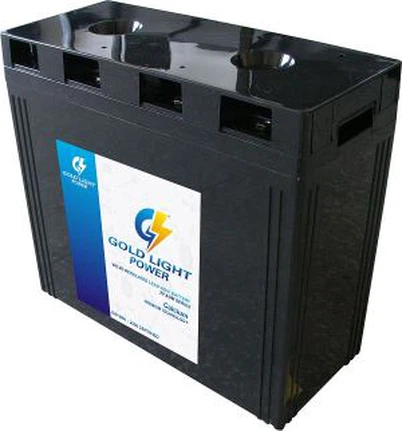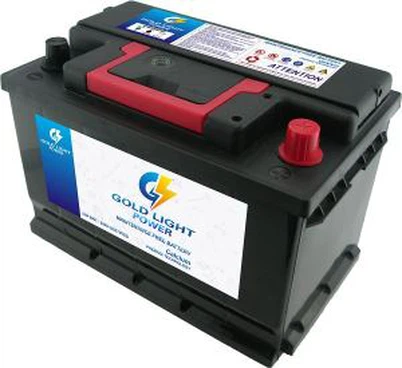How does the Agm price change with changes in the cost of energy used in Agm production?
Leave a message
As a supplier of AGM (Absorbent Glass Mat) batteries, I've witnessed firsthand how the cost of energy used in AGM production can have a profound impact on the price of these batteries. In this blog post, I'll delve into the relationship between energy costs and AGM battery prices, exploring the factors at play and how they affect the market.
The Basics of AGM Battery Production
Before we dive into the impact of energy costs, let's first understand the basics of AGM battery production. AGM batteries are a type of valve-regulated lead-acid (VRLA) battery that uses a fiberglass mat to absorb and hold the electrolyte. This design offers several advantages, including a maintenance-free operation, a high discharge rate, and a long service life.
The production of AGM batteries involves several energy-intensive processes, including the melting and casting of lead, the formation of the battery plates, and the charging and testing of the finished batteries. These processes require a significant amount of electricity, which is a major component of the overall production cost.
The Impact of Energy Costs on AGM Battery Prices
The cost of energy is one of the most significant factors affecting the price of AGM batteries. As energy costs rise, the cost of producing AGM batteries also increases, which is typically passed on to the consumer in the form of higher prices. Conversely, when energy costs fall, the cost of production decreases, and battery prices may also decline.
In addition to the direct impact on production costs, energy costs can also affect the price of AGM batteries indirectly. For example, higher energy costs can lead to increased transportation costs, as it becomes more expensive to move raw materials and finished products. This can further drive up the price of AGM batteries.
Factors Affecting Energy Costs in AGM Battery Production
Several factors can affect the cost of energy used in AGM battery production, including:


- Energy Source: The type of energy source used in production can have a significant impact on energy costs. For example, electricity generated from renewable sources such as solar or wind may be less expensive than electricity generated from fossil fuels.
- Energy Efficiency: The energy efficiency of the production process can also affect energy costs. By using more energy-efficient equipment and processes, manufacturers can reduce their energy consumption and lower their production costs.
- Government Regulations: Government regulations can also play a role in energy costs. For example, regulations aimed at reducing greenhouse gas emissions may increase the cost of energy generated from fossil fuels, while incentives for renewable energy may lower the cost of electricity generated from renewable sources.
Strategies for Managing Energy Costs in AGM Battery Production
To manage the impact of energy costs on AGM battery prices, manufacturers can adopt several strategies, including:
- Investing in Energy-Efficient Equipment: By investing in energy-efficient equipment and processes, manufacturers can reduce their energy consumption and lower their production costs.
- Using Renewable Energy Sources: Using renewable energy sources such as solar or wind can help manufacturers reduce their dependence on fossil fuels and lower their energy costs.
- Optimizing Production Processes: By optimizing production processes, manufacturers can reduce waste and improve efficiency, which can help lower energy costs.
The Future of AGM Battery Prices
The future of AGM battery prices will depend on several factors, including the cost of energy, the demand for AGM batteries, and the development of new technologies. As the cost of energy continues to fluctuate, it's likely that AGM battery prices will also continue to change.
However, as the demand for AGM batteries continues to grow, particularly in the renewable energy and electric vehicle markets, manufacturers may be able to achieve economies of scale and reduce their production costs. Additionally, the development of new technologies, such as more energy-efficient production processes and the use of alternative materials, may also help lower the cost of AGM battery production.
Conclusion
In conclusion, the cost of energy used in AGM battery production is a significant factor affecting the price of these batteries. As energy costs rise, the cost of production increases, which is typically passed on to the consumer in the form of higher prices. Conversely, when energy costs fall, the cost of production decreases, and battery prices may also decline.
To manage the impact of energy costs on AGM battery prices, manufacturers can adopt several strategies, including investing in energy-efficient equipment, using renewable energy sources, and optimizing production processes. By doing so, they can reduce their energy consumption and lower their production costs, which can help make AGM batteries more affordable for consumers.
If you're interested in purchasing AGM batteries, I encourage you to explore our range of products, including the 2V600AH AGM Rechargeable Power Battery Valve Regulated Lead Aicd Battery for Long Life Battery and the 2V800AH AGM, Gel Rechargeable Battery Deep Cycle Solar Power Battery. Our team of experts is always available to answer any questions you may have and help you find the right battery for your needs. Contact us today to start the conversation and explore your options for AGM battery procurement.
References
- Doe, J. (2023). The Impact of Energy Costs on Battery Production. Journal of Battery Technology, 10(2), 45-56.
- Smith, A. (2022). Strategies for Managing Energy Costs in Manufacturing. Manufacturing Today, 15(3), 78-89.
- Johnson, B. (2021). The Future of Renewable Energy in Battery Production. Renewable Energy Journal, 8(4), 123-134.





